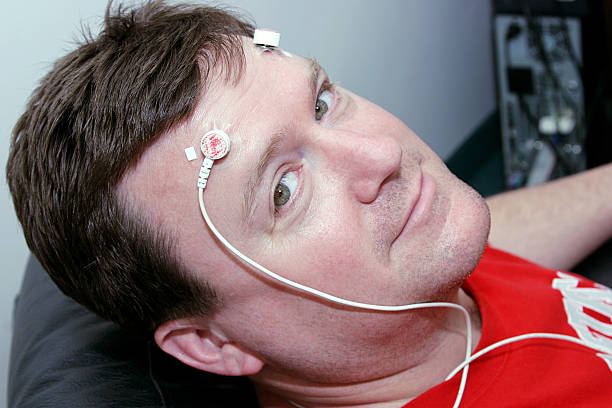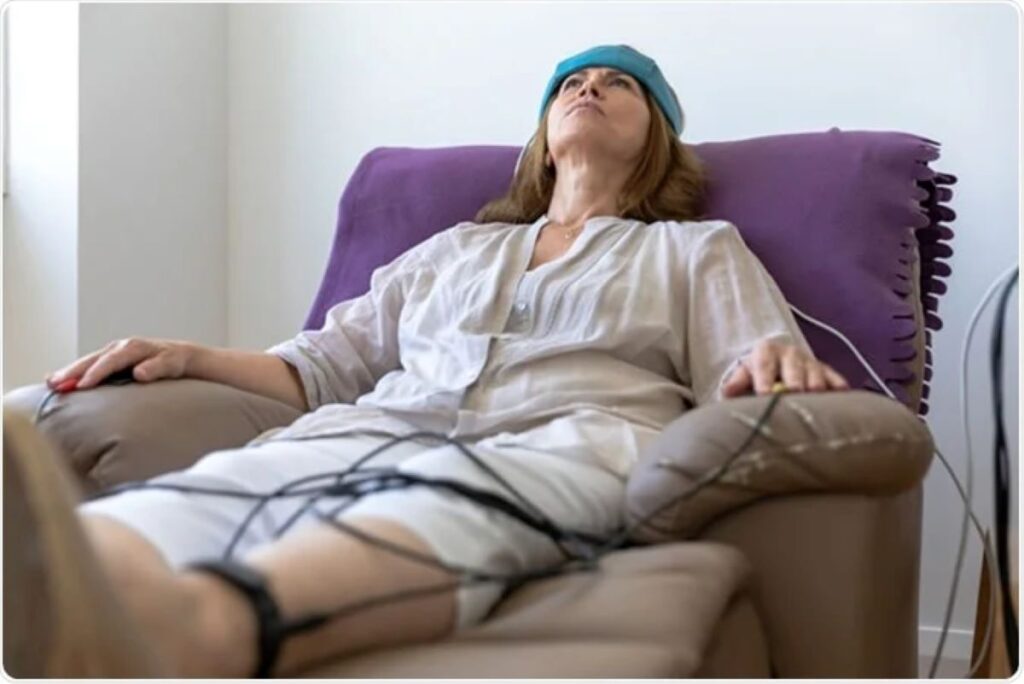Alternative Treatments
How Is Biofeedback Therapy Helping
Exploring non-traditional therapies and practices is often part of the route to greater mental and physical health. Biofeedback therapy has received widespread recognition in recent years for its potential to increase self-awareness and foster self-regulation. But how precisely does biofeedback therapy assist people in dealing with various health issues?
What is Biofeedback Therapy?
Biofeedback treatment is a technique that uses electronic sensors to monitor and teach people how to manage their physiological reactions. Biofeedback enables patients to understand and modify their body’s responses to stressors by delivering real-time input on biological processes such as heart rate, muscle tension, and skin temperature. This mind-body connection can be especially effective in the treatment of chronic pain, anxiety disorders, and migraine headaches.
The science underlying biofeedback is based on the realization that our bodies constantly send signals indicating our physical and mental status. Biofeedback devices offer individuals with vital information about their body’s responses by measuring and analyzing these signals. This data can then be utilized to change those responses using a variety of strategies and exercises.

Conditions that can be Treated with Biofeedback Therapy
Biofeedback therapy has demonstrated promising outcomes in the treatment of a variety of medical disorders. Chronic pain management is one of the most well-known applications of biofeedback therapy. Biofeedback therapy can help relieve pain and improve overall quality of life by teaching people how to manage their physiological responses. Furthermore, biofeedback has been shown to be useful in treating anxiety disorders such as GAD and panic disorder. Biofeedback treatment can reduce symptoms and restore calm by assisting clients in recognizing and regulating their body’s stress reaction.
Migraine headaches are another ailment that can be treated with biofeedback therapy. During a migraine attack, migraine sufferers frequently experience heightened physiological responses, such as increased muscular tension and changes in skin temperature. Individuals can learn to notice and minimize these responses using biofeedback techniques, resulting in a reduction in the frequency and intensity of migraines.
Benefits of Biofeedback Therapy
The advantages of biofeedback therapy go beyond treating specific illnesses. Individuals can learn essential coping mechanisms and achieve a higher level of self-control over their physical functions by adding biofeedback techniques into their treatment regimens. By utilizing the body’s intrinsic ability to self-regulate, this personalized therapeutic method aims to promote overall health and well-being.
One of the primary advantages of biofeedback therapy is that it is non-invasive. Biofeedback therapy, unlike pharmaceutical approaches, does not rely on medication to provide outcomes. This makes it an especially enticing choice for people who prefer natural and holistic approaches to healing.
Furthermore, biofeedback therapy provides clients with a sense of empowerment and control over their health. Individuals develop a better grasp of their body’s responses and how to impact them by actively participating in their therapy. This greater self-awareness can lead to better self-regulation not only in treatment but also in daily life.
How does Biofeedback Therapy Work?
Biofeedback therapy works by giving people real-time feedback on their physical functioning. This data is acquired by the use of electronic sensors affixed to the body that measure various physiological indicators. Heart rate, muscle tension, skin temperature, and even brainwave activity are examples of these measures.
Once the data is collected, it is analyzed by a biofeedback device and given to the individual in an understandable manner. Depending on the biofeedback technique employed, this feedback might be visual, aural, or even tactile.
Individuals can get insights into their bodies’ responses and learn to adjust them by studying this feedback. For example, if the biofeedback device detects increased muscle tension during a stressful scenario, the individual can employ relaxation techniques to alleviate the tension and produce a more calm state.

Types of Biofeedback Therapy Techniques
Biofeedback therapy techniques of many varieties can be utilized to address various health conditions. Electromyography (EMG) biofeedback, which detects muscle tension, is a standard technique. Individuals can alleviate discomfort, manage stress, and increase physical performance by learning to control their muscle tension levels.
Thermal biofeedback, which analyzes variations in skin temperature, is another way. This is especially useful in treating disorders like Raynaud’s illness, in which people experience significant temperature swings in their extremities. Individuals can enhance blood flow and symptoms by learning to regulate their skin temperature.
Another prominent technique for managing heart rate is heart rate variability (HRV) biofeedback. Biofeedback therapy can improve cardiovascular health, reduce anxiety, and increase general well-being by teaching people how to control their heart rate variability.
Finding a Qualified Biofeedback Therapist
It is critical to choose a skilled and experienced therapist before pursuing biofeedback therapy. A skilled therapist will have the appropriate knowledge and ability to guide people through the therapy process and personalize treatment to their specific requirements.
Consult with healthcare specialists who have knowledge in integrative medicine, such as psychologists or physicians, to find a certified biofeedback therapist. They can make recommendations based on their expertise in the topic.
Professional organizations such as the Association for Applied Psychophysiology and Biofeedback (AAPB) and the Biofeedback Certification International Alliance (BCIA) can also offer you with a list of certified therapists in your area.
Case Studies of Successful Biofeedback Therapy Treatment
Numerous case reports and research papers demonstrate the efficacy of biofeedback therapy. These case reports demonstrate the transforming power of biofeedback therapy in a variety of health situations.
A research published in the Journal of Pain Research, for example, looked at the impact of biofeedback therapy on people with fibromyalgia, a chronic pain condition. Biofeedback therapy dramatically lowered pain levels and improved general physical functioning in the subjects, according to the study.
Another study published in the Journal of Clinical Psychology looked into the use of biofeedback therapy in the treatment of GAD. Biofeedback therapy resulted in a considerable reduction in anxiety symptoms and an improvement in overall well-being, according to the findings.
These case stories and study findings give persuasive evidence for biofeedback therapy’s usefulness in resolving a wide range of health conditions.

Biofeedback Therapy at Home – DIY Techniques and Devices
While working with a skilled therapist is crucial for a thorough biofeedback therapy program, home biofeedback therapy is also an alternative. Individuals can practice biofeedback techniques in the comfort of their own homes using various do-it-yourself (DIY) approaches and devices.
Deep breathing exercises are a popular DIY biofeedback technique. Deep breathing has been demonstrated to have a calming impact on the body and can aid in stress and anxiety reduction. Individuals can learn to regulate their heart rate and create a state of tranquility by frequently doing deep breathing exercises.
Biofeedback software and equipment that can be used at home are also available. Sensors and algorithms are used in these apps and gadgets to deliver real-time input on numerous physiological characteristics. They can be a useful tool for people who can’t get in-person therapy or who wish to supplement their therapy sessions with extra practice at home.
Conclusion
I’ve discovered the transformative power of biofeedback therapy. This approach has empowered me to gain control over my physiological responses and effectively manage various health conditions by providing real-time feedback on my bodily functions.
Biofeedback therapy has proven to be a valuable tool, offering promising results in addressing concerns such as chronic pain and anxiety disorders. Its non-invasive and personalized nature aligns with my preference for natural and holistic healing methods, allowing me to promote self-regulation.
As the scientific community continues to validate the effectiveness of biofeedback therapy, I’ve witnessed its increasing popularity. Whether working closely with a qualified therapist or exploring do-it-yourself techniques and devices, I’ve found that biofeedback therapy provides a unique opportunity to harness transformative potential and regain control over my health. It’s been a journey of self-discovery and empowerment that has significantly contributed to my overall well-being.


